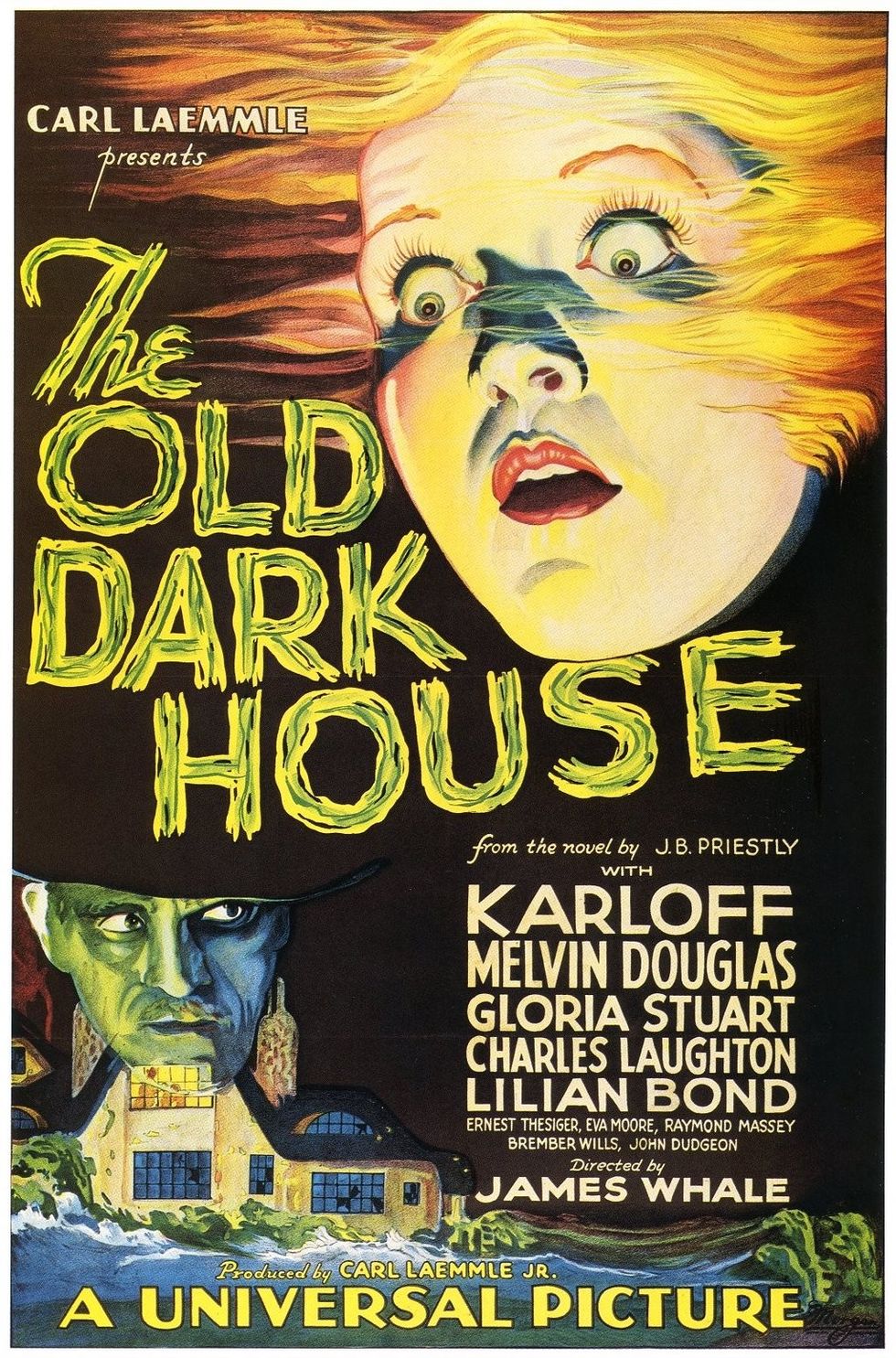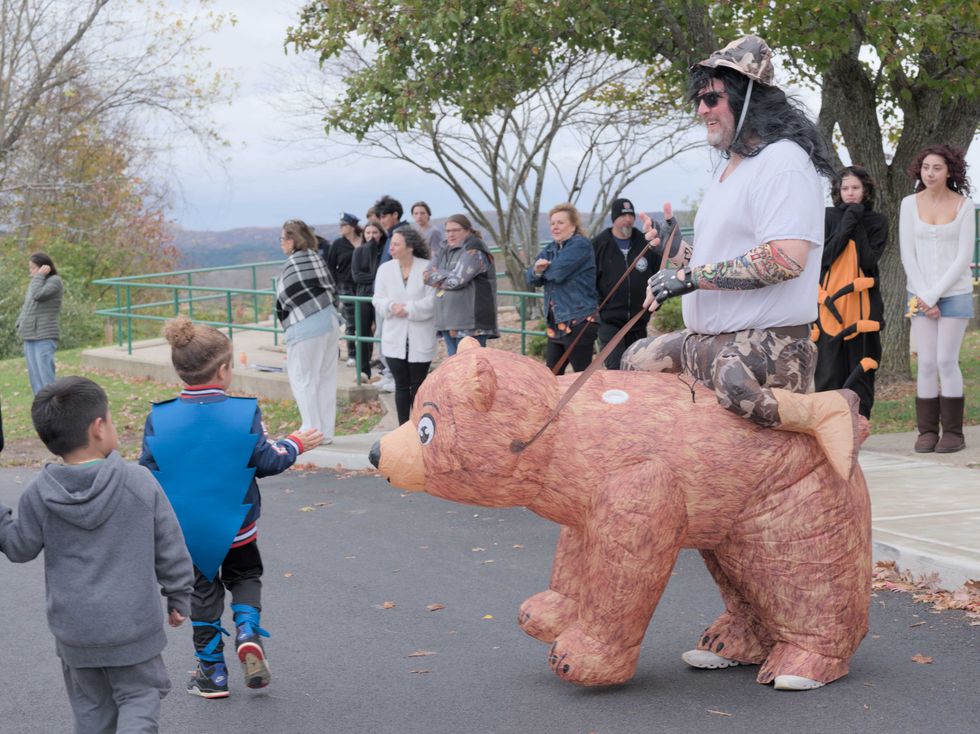From Cradle to Crypt, A History of Horror Films


If you are looking to get into the Halloween spirit and learn about the history of horror film, this is your year to hit up big-screen October showings in the Tristate region. Between these four events, you can get the full range of horror film history and genres.
It’s Alive: The Horror Film Is Born
Horror got its start in the silent era. The Bardavon in Poughkeepsie, N.Y., is hosting a screening on Oct. 29 of what some call the very first (and in my opinion, still scariest) horror film: “Nosferatu,” released in Germany in 1922 and the U.S. in 1929.
This first film version of the Dracula mythos was an unofficial and unauthorized adaptation of the 1897 novel by Bram Stoker; the names of the characters had to be changed for the film.
Although truly terrifying, “Nosferatu” is also beautiful. It uses shadow and light to create an atmosphere of mystery and foreboding. It was one of the first films to use special effects to create an impossible monster, one that can only exist on the screen. This movie shows where it all started with horror movies and is a must-see for anyone interested in not just horror but film in general.
“Nosferatu,” directed by F.W. Murnau and released in 1922, will be shown on Friday, Oct. 29, 7:30 p.m. at Ulster Performing Arts Center, on Broadway in Kingston, N.Y., with live organ accompaniment by John Baratta.
All seats are $6, Bardavon members are free. There will be costume contests, photo booths and more. Go to www.bardavon.org for information.
Romance and Gothic Terror
Moving forward chronologically through film history, the Kent Memorial Library in Kent, Conn., is offering weekly showings of “vintage horror” on an outdoor screen this month.
Featuring movies from the 1930s and early 1940s, the library’s film choices (curated by Ben Rybeck from House of Books) offer a Gothic and atmospheric lineup of black-and-white classics. These films may be less gory and shocking than modern horror — and are therefore good for all ages.
But they are also important moments in film history; and they offer a different type of horror than the modern viewer is used to: the slower build of terror, a reliance on an atmosphere of creepiness full of cobwebbed and candle-lit castles dancing with shadows and foggy, moonlit nights — rather than kill counts and jump scares.
There is also the romance of the Gothic monsters. Unlike the modern horror slashers who are stoic, silent juggernauts of strength who kill single mindedly, the Gothic villain is psychologically complex — and often even sympathetic.
“Dracula” was shown on Oct. 7. Next in the series is “The Old Dark House” on Oct. 14. This 1932 release is a lesser known black-and-white horror film by James Whale — best known for directing “Frankenstein” and “Bride of Frankenstein.”
This film was recently featured on the Criterion Channel’s collection called Queersighted Horror (Queer Fear). Whale’s own sexuality has caused many of his films, including “The Old Dark House,” to be re-analyzed through the lens of queer subtextual themes in pre-code Hollywood.
Whale’s films set a precedent for the horror film as a place for the outsider, “the othered,” to find comfort — which is why horror films are often so closely entangled with queer sensibility. After that is “Cat People” on Oct. 21; and another Whale film, “Bride of Frankenstein” Oct. 28.
The free outdoor movies at the library begin at 7 p.m. Blankets, chairs and cozy apparel are encouraged. Registration is not required but is helpful, kla-bmcallister@biblio.org.
Three Decades of Horror
The Millerton Moviehouse in Millerton, N.Y., has an October lineup that covers the history of modern horror through the decades. Manager Casey Lehman has curated a list that spans three different decades, starting in the 1960s and ending in 1990.
Each film is one that was influential on horror as we know it today — both their story themes as well as their cinematic techniques used to instill fear.
The series started on Oct. 6 with Alfred Hitchcock’s 1960 film, “Psycho.”
The feature on Oct. 13 and 16 was “The Bird with the Crystal Plumage,” representing the “giallo” genre from Italy in the 1970s that, while lesser known in the States, has been hugely influential on the aesthetics of modern horror worldwide.
The two remaining films this month are both based on Stephen King novels.
Representing the 1980s is Stanley Kubrick’s “The Shining,” which remains one of the most beautifully shot and psychologically complex and terrifying horror films, with legendary acting from Jack Nicholson and Shelley Duvall. Don’t miss the chance to see it on a big screen on Wednesday, Oct. 20, at 7:30 p.m. and Saturday, Oct. 23, at 9 p.m.
Finishing the Moviehouse lineup is “Misery” from 1990. Kathy Bates won an Oscar for her performance as a crazed fan of the novelist main character, whom she traps in her isolated home during a snowstorm. The COVID-19 isolation of the past two years will add to your appreciation of this film’s claustrophobic suspense.
See “Misery” on Wednesday, Oct. 27, at 7:30 p.m. and Saturday, Oct. 30, at 9 p.m. For more information and to order tickets go to www.themoviehouse.net.
And at Last: It’s ‘Halloween’
Arrive in the cinematic modern day at the Four Brothers Drive-In in Amenia, N.Y., with a double feature: the brand-new “Halloween Kills” and “Halloween” from 2018.The two most recent installments in the long-running Halloween franchise, started by John Carpenter in the 1970s, these two films are slick and modern but with plenty of homages to their horror history — and Jamie Lee Curtis reprising her role as the Final Girl.
There are other activities that evening as well. For information, go to https://playeatdrink.com and www.blackholemonoplex.com/HOLEAWEEN.
Webutuck Elementary students ushered in Halloween with a colorful parade around the school parking lot on Friday, Oct. 31, delighting middle and high school students who lined the sidewalk to hand out candy.

Legal Notice
Brevi Properties LLC
Brevi Properties LLC, a domestic LLC, filed with the SSNY on 8/27/2025. SSNY is designated as agent upon whom process against the LLC may be served. SSNY shall mail process to 16 Peaceable Way Dover Plains, NY 12522. Purpose: Real estate management. Section 203 of the Limited Liability Company Law.
10-09-25
10-16-25
10-23-25
10-30-25
11-06-25
11-13-25
LEGAL NOTICE ANNUAL ELECTION OF THE Pine Plains
Fire District
On December 9, 2025
NOTICE IS HEREBY GIVEN that the Annual Election of the Pine Plains Fire District will take place on December 9, 2025 between the hours of 6:00 p.m. and 9:00 p.m. at the Pine Plains Fire House located at 7 Lake Road, Pine Plains, New York 12567 for the purpose of electing one Commissioner: one Commissioner for a five (5) year term, commencing January 1, 2026 and ending December 31, 2030. Only residents registered to vote with the Dutchess County Board of Elections on or before November 16, 2025 and have resided in the Pine Plains Fire District for at least thirty days prior to the election, shall be eligible to vote.
Candidates for District Office shall file their names and the position they are seeking with the Secretary of the Pine Plains Fire District, Heather Lamont, P.O. Box 860, Pine Plains, New York 12567 no later than November 19, to 2025.
November 6, 2025.
BOARD OF FIRE COMMISSIONERS
PINE PLAINS
FIRE DISTRICT
11-06-25
Legal Notice
Silent Mind Apparel, LLC, Arts. of Org. filed with the Secy. of State of NY (SSNY) on 09/09/2025. Office location: Dutchess County, NY. SSNY designated as agent of LLC upon whom process against it may be served. SSNY shall mail process to: P.O. Box 593. Purpose: any lawful act.
10-02-25
10-09-25
10-16-25
10-23-25
10-30-25
11-06-25
LEGAL NOTICE
The South Amenia Cemetery Association Annual Meeting will be held Friday, November 07, 2025 at 7:00PM at 4007 Route 22, Wassaic, NY 12592 for the election of officers and trustees and the transaction of other such business as may legally come before it.
Amiee C. Duncan, Secretary
11-06-25
NOTICE OF
ANNUAL ELECTION
Wassaic Fire District in the Town of Amenia,
Dutchess County,
New York
NOTICE IS HEREBY GIVEN, that pursuant to Section 175 of the Town Law, and other applicable statutes, an annual election of the Wassaic Fire District will be held on the 9th Day of December, 2025, at the firehouse located at 27 Firehouse Road, Wassaic, NY, between the hours of 6:00 p.m. and 9:00 p.m. for the purpose of electing the following:
ONE FIRE COMMISSIONER for a term of five (5) years commencing on January 1, 2026, and ending December 31, 2030; and
Each registered elector of the Town of Amenia who shall have resided in the Wassaic Fire District for a period of thirty days next preceding the election shall be qualified to vote at the election.
NOTICE TO CANDIDATES
Candidates must file their names with the Fire District Secretary on or before November 19, 2025. A candidate must be a resident elector of the Wassaic Fire District and registered voter in the Town of Amenia.
Dated: Wassaic, New York
November 5, 2025
BY ORDER OF THE BOARD OF FIRE COMMISSIONERS OF THE WASSAIC FIRE DISTRICT in the Town of Amenia, Dutchess County, New York.
Fire District Secretary
11-06-25
Notice of Publication
SUPREME COURT OF THE STATE OF
NEW YORK
COUNTY OF DUTCHESS
Index No. 2025-51557
FORECLOSURE SUPPLEMENTAL SUMMONS
LLACG COMMUNITY INVESTMENT FUND,
Plaintiff,
-against-
DONNA PARILLO, AS HEIR, DEVISEE, DISTRIBUTEE OF THE ESTATE OF EDWARD P. SWEENEY, DECEASED; BRENDA J. SWEENEY, AS HEIR, DEVISEE, DISTRIBUTEE OF THE ESTATE OF
EDWARD P. SWEENEY, DECEASED; DONALD E. SWEENEY AS HEIR, DEVISEE, DISTRIBUTEE
OF THE ESTATE OF EDWARD P. SWEENEY, DECEASED; EDWARD P. SWEENEY AS HEIR,
DEVISEE, DISTRIBUTEE OF THE ESTATE OF EDWARD P. SWEENEY, DECEASED; JAMES
RICHARD SWEENEY AS HEIR, DEVISEE, DISTRIBUTEE OF THE ESTATE OF EDWARD P.
SWEENEY, DECEASED; ROSEMARY SWEENEY AS HEIR, DEVISEE, DISTRIBUTEE OF THE
ESTATE OF EDWARD P. SWEENEY, DECEASED; SCOTT P. SWEENEY AS HEIR, DEVISEE,
DISTRIBUTEE OF THE ESTATE OF EDWARD P. SWEENEY, DECEASED; THOMAS SWEENEY AS
HEIR, DEVISEE, DISTRIBUTEE OF THE ESTATE OF EDWARD P. SWEENEY, DECEASED; RENEE PERRY AS HEIR, DEVISEE, DISTRIBUTEE OF THE ESTATE OF EDWARD P. SWEENEY,
DECEASED; ANY AND ALL KNOWN OR UNKNOWN HEIRS, DEVISEES, GRANTEES, ASSIGNEES, LIENORS, CREDITORS, TRUSTEES AND ALL OTHER PARTIES CLAIMING AN INTEREST BY, THROUGH, UNDER OR AGAINST THE ESTATE OF EDWARD P. SWEENEY, DECEASED; NEW
YORK STATE DEPARTMENT OF TAXATION AND FINANCE; UNITED STATES OF AMERICA ON BEHALF OF THE INTERNAL REVENUE SERVICE; “JOHN DOE #1- #50” and “MARY ROE #1- #50”, the last two names being fictitious, it being intended to name all other parties who may have some interest in or lien upon the premises described in the Complaint,
Defendants.
TO THE ABOVE-NAMED DEFENDANTS:
YOU ARE HEREBY SUMMONED and required to serve upon plaintiff’s attorney an answer to the complaint in this action within twenty days after service, or within thirty days after service is complete if the summons is not personally delivered to you within the State of New York. The United States of America, if designated as a defendant in this action, may answer or appear within sixty days of service hereof. If you fail to answer, judgment will be taken against you for the relief demanded in the complaint.
Trial is desired in the County of Dutchess. The basis of venue designated above is that the real property that is the subject matter of this action is located in the County of Dutchess.
NOTICE
YOU ARE IN DANGER OF LOSING YOUR HOME.
If you do not respond to this Summons and Complaint by serving a copy of the answer on the attorney for the mortgage company who filed this foreclosure proceeding against you and filing the answer with the court, a default judgment may be entered and you can lose your home.
Speak to an attorney or go to the court where your case is pending for further information on how to answer the Summons and protect your property. Sending a payment to your mortgage company will not stop this foreclosure action.
YOU MUST RESPOND BY SERVING A COPY OF THE ANSWER ON THE ATTORNEY FOR
THE. PLAINTIFF (MORTGAGE COMPANY) AND FILING THE ANSWER WITH THE COURT.
Dated: October 14, 2025
MCMICHAEL TAYLOR GRAY, LLC
By: s/ Patricia Pirri, Esq.
Attorneys for Plaintiff
3550 Engineering Drive, Suite 260
Peachtree Corners, GA 30092
(404)474-7149
10-23-25
10-30-25
11-06-25
11-13-25
Weatogue Stables has an opening: for a full time team member. Experienced and reliable please! Must be available weekends. Housing a possibility for the right candidate. Contact Bobbi at 860-307-8531.
Deluxe Professional Housecleaning: Experience the peace of a flawlessly maintained home. For premium, detail-oriented cleaning, call Dilma Kaufman at 860-491-4622. Excellent references. Discreet, meticulous, trustworthy, and reliable. 20 years of experience cleaning high-end homes.
Hector Pacay Service: House Remodeling, Landscaping, Lawn mowing, Garden mulch, Painting, Gutters, Pruning, Stump Grinding, Chipping, Tree work, Brush removal, Fence, Patio, Carpenter/decks, Masonry. Spring and Fall Cleanup. Commercial & Residential. Fully insured. 845-636-3212.
SNOW PLOWING: Be Ready! Local. Sharon/Millerton/Lakeville area. Call 518-567-8277.
Local editor with 30 years experience offering professional services: to writers working on a memoir or novel, or looking for help to self publish. Hourly rates. Call 917-331 2201.
PUBLISHER’S NOTICE: Equal Housing Opportunity. All real estate advertised in this newspaper is subject to the Federal Fair Housing Act of 1966 revised March 12, 1989 which makes it illegal to advertise any preference, limitation, or discrimination based on race, color religion, sex, handicap or familial status or national origin or intention to make any such preference, limitation or discrimination. All residential property advertised in the State of Connecticut General Statutes 46a-64c which prohibit the making, printing or publishing or causing to be made, printed or published any notice, statement or advertisement with respect to the sale or rental of a dwelling that indicates any preference, limitation or discrimination based on race, creed, color, national origin, ancestry, sex, marital status, age, lawful source of income, familial status, physical or mental disability or an intention to make any such preference, limitation or discrimination.
Sharon, 2 Bd/ /2bth 1900 sqft home: on private Estate-Gbg, Water, Mow/plow included. utilities addtl. Please call: 860-309-4482.
Falls Village, CT
Saturday November 8 Tag Sale in the Barn: 91 Main Street in Falls Village 10 to 3 pm. Please Park in town parking available along Main St. Tools, wood working tools, bench, furniture, antique doors, out door planters, Halloween and Christmas decorations and much more.
